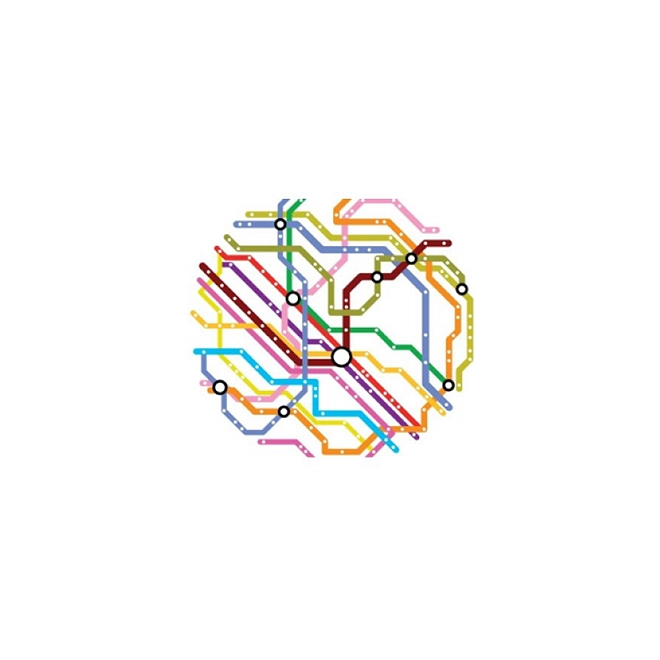6 ways tech is powering the next generation of infrastructure
The best thing about industry summits is that they neatly surface the most complex challenges – and by default, the most exciting opportunities. And when it comes to the AFR Infrastructure Summit, one theme that clearly ran across both days this year is the critical role digital technology is playing in delivering the next generation of infrastructure.
It’s fair to say that digital transformation is well underway in infrastructure, but we still have a long road (pun intended) to travel.
I really enjoyed being part of a panel to discuss the tech trends we’re seeing in the Australian infrastructure space, which has led to many conversations since. I’ve captured 6 insights from those discussions below the illustration.

- Networked infrastructure is the future – from when new infrastructure projects are designed through to how they’re delivered, operated and maintained. Collaboration between asset owners and technology providers is now essential to design connectivity into modern infrastructure projects. We all hear about smart infrastructure, smart precincts, smart cities… and these are all underpinned by their connectedness which enables the whole system to work in an optimal manner. For example, freeways which provide real time predictions of destination arrival times based on their understanding of traffic volumes in the network, and train networks that interact with each other to optimise safety, service and cost outcomes. Smart infrastructure now needs to be built in a connected way to ensure its output is optimised. Tokyo is an excellent example of how a networked city can smooth the way for citizens, enabled by technology.
- Technology and information are now essential to deliver infrastructure performance - the nation will spend A$250 billion on infrastructure systems and networks assets in the next four years – this is unprecedented! And probably never to be repeated. We’ve got one shot at it as a nation. To make every dollar count, we need infrastructure information and technologies designed and built into these programs from the beginning. This will ensure that reliable data is collected to generate meaningful and actionable information to drive performance outcomes across the infrastructure lifecycle. When done well, these information flows support operational performance management and support the business case for the infrastructure investment.
- Infrastructure information sharing drives better outcomes – cloud computing and storage can securely store and share data – in real or close to real time and can make this information available in a secure way to all the parties that need access to it. For example, complex infrastructure projects can have over 1,000 people working on them. With smart technology, people on the shop floor and those in upper management can instantly access daily updates to get visibility of what’s going on to make fast, effective decisions. This is a game changer through design, construction and operation: having the right information and insights at your fingertips can massively improve throughput, reduce emissions, reduce costs…the benefits are enormous through information sharing.
- As well as managing costs, asset owners need to design for sustainable, ethical, low-carbon supply chains – by gaining a solid understanding of their suppliers’ operations and extended network. The mapping of global supply chains is now possible and is increasingly becoming essential to meet project Environmental, Social and Governance commitments and obligations. Supply chain transparency is driving better supply choices and lower risk arrangements that can ensure that new builds contribute towards net zero targets, and are sustainable, ethical investments that contribute to the Australian economy over the long term.
- Technology can support an information enabled revolution in our use of infrastructure – a world in which citizens have instant access to the way their networked infrastructure is performing – based on real-time load, capacity, and congestion feeds – means they can choose the best way (and time) to get around and when they can best access the health services, parking, etc. they need. Trucks will be able to be directed through cities at the lowest cost, with the lowest emissions, via the fastest route from port to market. The flow-on benefits would include improvements in reliability, safety and a whole lot of other public benefits. We would need to change our national mindset to make this happen.
- Infrastructure owners and operators need to understand what technology is out there, and how to apply it – there is a vast amount of new technology, ranging from physical machinery (electric trains and trucks) to digital (machine learning, artificial intelligence and process bionics) and a range of better and cheaper ways of accessing it, (software as a service and scalable cloud solutions). However, executives’ levels of understanding of how to embrace these new technologies is limited which means we’re missing opportunities to build and operate infrastructure assets efficiently, innovatively and quickly.
To build a more prosperous, sustainable future tomorrow, we need to act together today – across and between sectors, assets owners, technology providers, the public and private sector. Our approach puts technology and innovation at the centre to realise this potential – smarter, quicker and more efficiently. We think big – to make infrastructure useful today and an investment in tomorrow.
To find out more about Deloitte’s infrastructure offerings, please visit our dedicated webpage.
Panel members:
Rob Spittle, Partner, Deloitte
Doug Moss, Managing Director, UGL
Wendy McMillan, Senior Regional Vice President - ANZ, Wabtec Corporation
Pascal Perez, Director- SMART Infrastructure Facility, University of Wollongong
Jessica Sier, Technology Reporter, The Australian Financial Review

